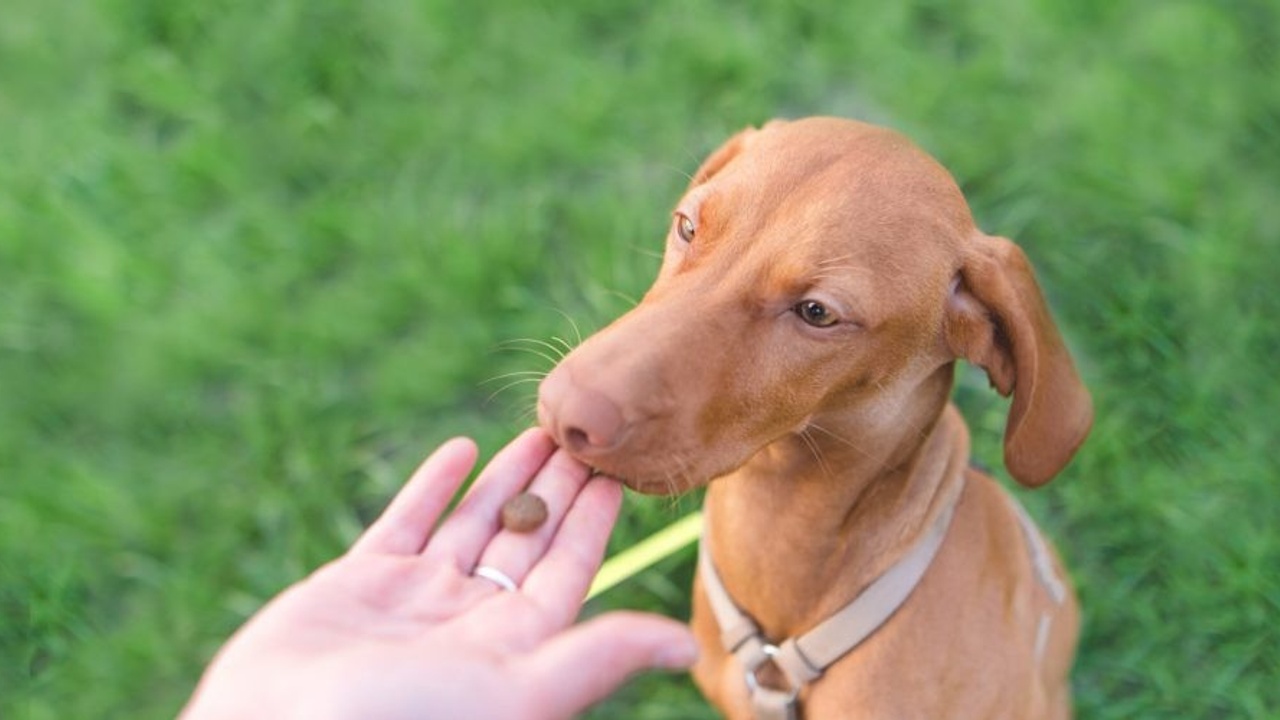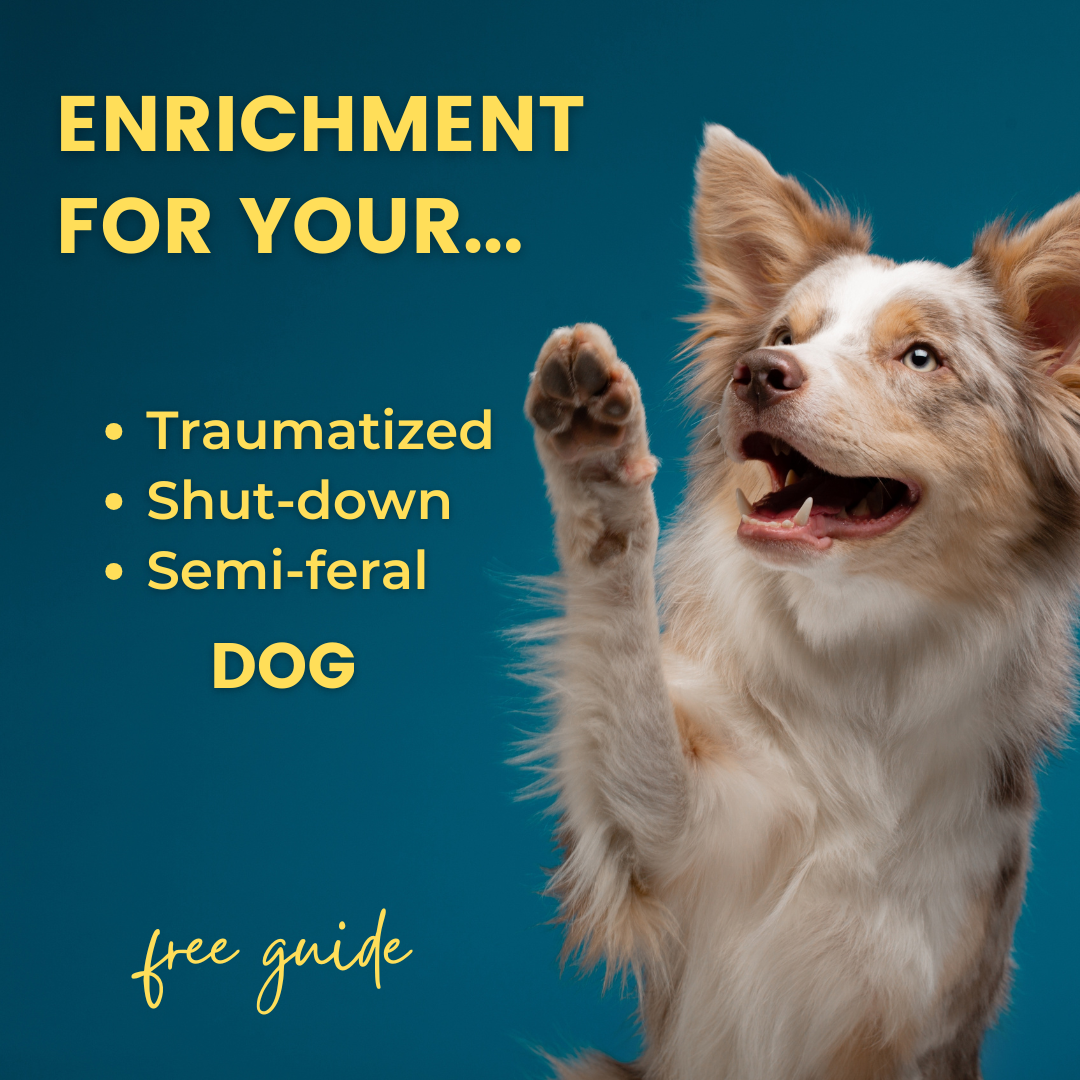
Recently we talked about what to do if your dog won’t eat treats in training sessions. But what if your dog WILL eat, but treats aren’t working to change their behavior? If your dog responds to cues and takes treats, but then barks and growls, this week’s video is for you.
If your dog is taking treats from you but still behaving aggressively, there are (at least) two common causes: 1) Your dog still has motivation and is getting reinforcement for the problem behavior; and 2) You’re accidentally reinforcing the problem behaviors yourself.
This week we talked about the first problem leading to treats not working: There are multiple motivations and reinforcers in play. Next week, we’ll talk about the second problem, accidentally reinforcing behavior you don’t want.
What does it mean for your dog to have competing motivations?
If training with treats isn’t working to decrease reactive behavior, your dog could be motivated to get other reinforcers in addition to treats. What the heck does this mean?
Before you started training, your dog was doing something you didn’t like- their fearful, reactive, or aggressive behavior. That behavior was reinforced by something. The example in this week’s video is a dog who is afraid of dogs and barks and lunges at them. The reinforcer for this behavior could be that other dogs move away when the fearful dog barks and lunges.
Maybe to change your dog’s behavior, you taught your dog to look at you on cue to get a treat. The reinforcer for looking at you is, we hope anyway, the treat.
Now you’re training around your dog’s triggers, the things they react to. You ask your dog to look at you, and they do! You give them a treat. But then they turn right back around and bark and lunge at the trigger.
If this sounds familiar, your dog might be motivated to get both reinforcers: the “old” reinforcer for their reactive behavior, AND treats. And your dog knows how to get those things. They can look at you to get a treat, and (for example) bark to make the trigger go away.
So one reason that your treats aren’t working to fix problem behavior is that both sets of motivations and consequences are alive and well. You’ve taught your dog new behaviors, but these are added to the mix rather than replacing the old behaviors.
How to tell if your dog has competing motivations?
In the video we talked about what behaviors give you a hint that treats aren’t working because motivations other than getting food are on your dog’s mind. These were:
1) Taking treats inconsistently: If your dog will only sometimes take treats in training sessions that they normally love, there could be motivations conflicting with the motivation to eat.
2) Not taking treats from your hand: Sometimes dogs who are worried will take treats you drop on the ground, but not from your hand. I don’t know why this is, but if you see this happen, consider making a change to your training.
3) Taking treats roughly: Sometimes dogs want the treat but are in a hurry to get back to another behavior like scanning the environment. This can cause them to grab treats roughly from your fingers.
4) “Stretching” to take treats: Sometimes a dog really wants a treat, but doesn’t want to go get it (e.g. from a stranger’s hand). These dog will often stretch their neck out to take the treat while keeping their feet in place.
5) Eating, then retreating or scanning the environment: When dogs take treats but rapidly alternate eating with scanning or moving away from triggers, they might have conflicting motivations. This can really slow down your training.
How to fix competing motivations?
If you think training with treats isn’t working because of competing motivations, try decreasing the motivation you think is competing with getting food. For example, say your dog is afraid of other dogs and behaves to make them go away. You could decrease motivation to make other dogs go away by:
1) Training farther away from the trigger. If a trigger your dog is afraid of is farther away, your dog will be less motivated to make it move away.
2) Working around “lower intensity” triggers. What this means will be specific to your dog. For a dog who is afraid of other dogs, this could mean working around dogs who aren’t running around or directly approaching.
3) Spending less time working near triggers. Instead of “parking” yourself and your dog in one location for training, move in and out to vary the distance. Spend most of your time at distances from the trigger that are very easy for your dog.
If you try any of these suggestions and like them- or don’t like them!- we’d love to hear from you. Join our Facebook group and post your questions or comments there, or reach out to us by email at [email protected].
If you're looking for more guidance with your fearful dog, check out our monthly training membership.
Categories


Have a dog who is too anxious to have fun? Grab this free guide & video lesson all about how to teach your extremely fearful dog their 1st enrichment game.


Community
We offer a free private Facebook support group for owners of fearful dogs to connect and share their stories. Join us there.


